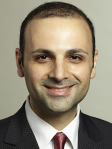
Accordingly, the management of laryngeal cancer has had a history torn between inflexible orthodoxy and hasty modernism. In the early days, when total laryngectomy—later supplemented by adjuvant radiation therapy—was the only weapon at hand, curing laryngeal cancer was simply an exercise in radicality, aimed at prolonging life at all costs without much consideration for the functional consequences of treatment itself. The ingenious developments of open partial laryngectomy and transoral laser microsurgery were soon able to offer alternative options for surgical management with no compromise on oncologic outcomes. However, a dramatic change in paradigm was initiated after the publication of the seminal chemoradiation reports and the advent of nonsurgical organ-preservation protocols, felt to be the conveyors of the long-awaited age of reason for the treatment of laryngeal cancer. Unfortunately, assertive implementation of definitive chemoradiation, with particular enthusiasm in this country, did not prove it to be the panacea, as survival rates have remained largely unchanged for the past thirty years, while the community realized that preserving the gross structure of the larynx was not sufficient to guarantee proper function.
Concurrently, quality-of-life expectations rose, and morbidity and function metrics of outcome became just as crucial as the traditional oncologic ones. With survival rates remaining fairly equivalent regardless of the treatment modality employed—provided patient selection is performed according to commonly accepted rules—it is now only logical to begin viewing the management of laryngeal cancer primarily through the prism of function preservation.
It is precisely the goal of this issue of Otolaryngologic Clinics of North America to place the emphasis on function. Rather than expressing peremptory and dismissive positions on individual treatment strategies, or expecting the unpredictable momentum of an erratic pendulum to pave new roads that may ultimately prove treacherous, there is tremendous opportunity in capitalizing on the vast treatment armamentarium, broadened knowledge base, and technology capabilities compiled through decades of experience, trials, and errors, in order to offer each patient a truly tailored approach meeting individual needs and expectations.
This issue tackles the critical goal of function preservation from various angles. First, the most reliable way to minimize the impact of disease or its treatment on laryngeal function remains early diagnosis. The unique anatomic and histologic aspects of tumor progression within the larynx are reviewed, as well as the clinical methods and increasingly sophisticated tools available to detect laryngeal cancer at its earliest stages.
Once the diagnosis of laryngeal cancer is confirmed, the stage of disease will be the main driver of the treatment strategy. The most recent data on the management of early glottic cancer are presented, along with the anticipated functional impact of surgical and nonsurgical modalities. We also review the state-of-the-art approaches to the rehabilitation of dysphonia resulting from those treatment modalities.
In its advanced stages, laryngeal cancer often continues to represent an essentially local hazard with major functional implications, possibly exacerbated by treatment. It is important to realize the potentially dramatic consequences of treatment not only on voice and swallowing functions, but also on overall quality of life, which we discuss and propose to recognize as a critical parameter of treatment selection. While total laryngectomy remains the gold standard of salvage treatment of radiorecurrent disease, we would be remiss to ignore the irreversible nature of its psychosocial effects, particularly in the presence of treatment alternatives that a carefully selected subset of patients may benefit from, whether through time-honored conservation laryngeal surgery procedures, or cutting-edge innovations in technique and treatment philosophy presented in this issue. Finally, crossing the Rubicon and performing a total laryngectomy will often solve some inextricable challenges, particularly pertaining to deglutition, but should not amount to renouncing the focus on voice function and quality-of-life preservation; thus, an overview of the current state of voice restoration after total laryngectomy is offered.
We close this issue of Otolaryngologic Clinics of North America with an exciting new “Early Practice” section, developed primarily for physicians in training or in their initial years of practice, in which we discuss some of the most relevant techniques of open partial laryngectomy, with a focus on anatomy through a simplified outline structure complemented with illustrative media material.
The elaboration of this unique collection of topics would not have been feasible without a gathering of world-class authors, who graciously agreed to honor me with their outstanding contributions. I am in debt to all of them, not only for their precious help with this project, but also for all they have done to help me affirm myself as a physician, as they represent a fine selection of esteemed mentors, colleagues, and friends of mine.
It is my hope that this collaborative effort will foster a rational and balanced understanding of where we should stand in our capacity of advocates of the patient with laryngeal cancer. If this issue succeeds merely in convincing a few skeptics, infuriating a handful of dogmatists, and giving hope to some cynics, then, undoubtedly, it will have served its purpose.
Stay updated, free articles. Join our Telegram channel

Full access? Get Clinical Tree


